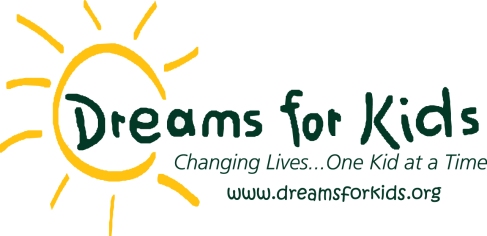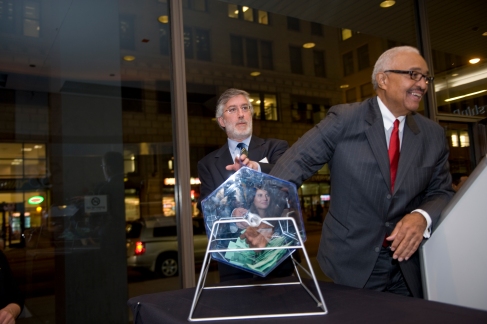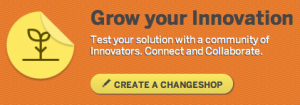IIC Helps Housing Choice Partner Create
IIC Helps Housing Choice Partner Create Opportunities For Fair Housing http://ow.ly/2Bzf3D
IIC Supports 101 Soldiers of the 101st A
IIC Supports 101 Soldiers of the 101st Airborne with Operation Homelink http://ow.ly/2Bk7Sh
IIC Helps Science Olympiad further The U
IIC Helps Science Olympiad further The Urban Schools Initiative in CPS http://ow.ly/2AejCx
Doing Business Doing Good SM – In 1995,
Doing Business Doing Good SM – In 1995, Sharon and I began incorporating something into the practice of our brokerage company MAP Real Estate, Inc. that we thought would both: Get us more business Do something good for the world We called that new approach to doing business, Investing In Communities®. We continued the practice for [] http://ow.ly/2zhF2W
For the Happiest of New Years, Let’s all win!

With this post, we both close the old year and bring in the new. While Investing In Communities® has accomplished a lot in the year past, we have far to go – probably around the world.
IIC’s community of communities – those seeking to strengthen and expand collaboration between the for-profit and nonprofit sectors for their mutual benefit – has nearly 400 participating charities. Because of our history, about 60 % are located in Chicago metro. The others range from St. Croix to Hawaii, from ME to WA, and from Mexico to Canada!
Because of a very active IIC volunteer who lives there, many of our 50 Member agents work in San Miguel de Allende, Mexico. We just made our first distribution to an IIC Nonprofit Partner not located in the US, Feed the Hungry San Miguel. What makes this event even more notable is that it’s the first time that the Member’s pledge was matched by their client. In fact, the client more than matched it. IIC requires only that the fortunate agent who is awarded the brokerage assignment pledge a minimum of 10% of that commission for distribution through IIC to their client’s favorite charity.
Since we began to make distributions in May, 2010, IIC has enabled more than $150,000 of support for IIC Partners.
Recently, we added a searchable Corporate Directory for companies wishing to use IIC as a tool in connection with corporate and/or employees’ transactions, and/or just wanting to affiliate their brands with ours. We look forward to building this into an important platform for companies large and small, wanting to strengthen connections to their respective communities of interest and desiring recognition for doing business doing good.
We attended a wonderful event today to celebrate the first day in history that Benefit Corporations can exist in IL and recognize the first group of such IL for-profits. A movement is afoot, which with increasing frequency will cause commerce, as it’s transacted, to benefit the parties to the transaction and the larger world. That’s the IIC model.
For this movement, “investing in communities” is not an after-effect of profit making, but is integral to making that profit. We at Investing In Communities believe this is the smartest way to do more business. What’s better than everyone winning?
We are humbled and very proud to be a part of this social enterprise movement. We will work hard to contribute to its spread, for the benefit of those companies, professionals, and their customers and clients, who see commerce as a way to fund solutions to communities’ challenges. IIC will continue to work hard to do this for the benefit of us all.
Happy New Year!
How Real Estate Helps Children Grow Into Leaders
“I’m a Dream Leader … I have to help people now.”
-J.L.
Despite the hard work of his single mother in raising J.L. and his siblings, J.L. experienced a difficult childhood. In order to ensure that his family always had enough to eat, J.L. would regularly shoplift. He was heading down the wrong path. That was until he attended his first Dream Leader Conference.
Dream Leader Conferences are programs created by Dreams for Kids in which at-risk youth and children with disabilities are brought together with their peers for the purpose of learning and helping others.[1]
After opening up and sharing his difficulties at home during the Dream Leader Conference, J.L. began the process of becoming a true leader. In discussing his old practices of stealing, J.L. said, “I’m a Dream Leader now. That isn’t what a Dream Leader does. I have to help people now. There are so many people who need more than I do and I have to help them. I need to be a good example.”
Attending a Dream Leader Conference provided J.L. with a new worldview. Following the conference, J.L. went out and put on a fundraiser to help drill a well for a small African village. This well would provide fresh water for the villagers rather than having them walk six miles each day to get buckets of dirty water from a pond. Upon receiving the first dollar from his fundraiser, J.L. stared at the money in disbelief. It was real. J.L. realized he was a Dream Leader now, and he could truly help people in need.
J.L.’s experience with Dreams For Kids is relatively typical. Kelly, another attendee said of her experience, “In a sense, Dreams for Kids has given me special powers to make the world a better place… I can now put smiles on children’s’ faces, so I can put a proud smile on my face.”[2]
It is not easy to put on Dream Leader events, and that is where the Investing In Communities innovative real estate model comes into play. In 2011, Michael Pink, a broker with MAP Real Estate, was asked to represent Urban Partnership Bank in a lease for its new downtown branch and offices. Pink got this assignment by pledging 15% of his commission to IIC, so that Urban Partnership Bank could provide funding for local charities of its choice. Through a random drawing, 15 different charities were chosen to receive different amounts of funding. In total, they received $42,000, including $5,000 for Dreams for Kids. (Read all about the drawing in IIC’s next blog post).
(Bill Lowry of Chicago Community Trust)
The impact of this $5,000 can be seen in different ways. The unrestricted funds could be viewed as helping fund two extra Dream Leader Conferences with 16 attendees each. Another way to view the donation is that the $5,000 provides an opportunity for 32 J.L.’s to mature. Thanks to Investing In Communities, and Urban Partnership Bank, and Pink, 32 at-risk and disabled youth will be given the opportunity to gain a whole new world view and begin to do good for the world.
Tracking Social Impact with Ashoka Changemakers: How Dreams for Kids is Getting it Right
Wonderful news! Investing In Communities is excited to announce a new partnership with Ashoka Changemakers. As a Funding Partner on Changeshops Beta, IIC will require all funding recipients to set up a free Changeshop so they (and we) can track the social impact of IIC’s funds.
What is social impact, anyway? When we talk about measuring social impact, we generally mean measuring social or environmental outcome – the result of implementing a program, producing a good, or consuming a product or service. Outcomes are distinct from outputs – the amount of goods produced or products delivered [1].
And why is this distinction important? Suffice it to say that the past ten years have seen an incredible upsurge in both the intensity and extent of outcome-oriented philanthropy [2]. Put another way, let’s face it: tracking the impact of social ventures has become an integral factor in determining which organizations receive funding. Foundations, corporate donors, and the government are all starting to evaluate impact. Funding is scarce, and you don’t want your organization to miss the boat. But it’s not just about funding. The real goal of impact assessment is to understand how to better serve your beneficiaries. (To read more about the broader implications of this industry shift to outcome-oriented philanthropy, we encourage you to check out a recent article by IIC’s Colleen Poynton: “The Challenges of Measuring Impact Assessment”).
With these two objectives in mind – funding and social good – let’s look at just how Investing In Communities’ partnership with Ashoka Changemakers will help nonprofits, consumers, and real estate professionals make a difference in their communities. Read more…
The Challenges of Measuring Social Impact
Social ventures are launching rapidly across the globe and striving to build sustainable business models that drive social or environmental progress. Yet to achieve progress through enterprise, social entrepreneurs must confront a challenge that has long plagued the nonprofit sector – quantifying and tracking social impact.
Substantive impact measurement can be costly and complex, but it’s critical for social ventures pursuing greater scale and efficacy. Recently, sector heavyweight Ashoka launched an open resource that will encourage and facilitate impact tracking across the social change sector – to the benefit of social entrepreneurs, ventures, funders, and investors globally.
When we talk about measuring social impact, we generally mean measuring social or environmental outcomes – i.e. the result of implementing a program, producing a good, or consuming a product or service. Outcomes are distinct from outputs – the amount of goods produced or products delivered.[1] While traditional business is concerned with profitably generating outputs, a social enterprise must produce outputs profitably (or at least sustainably), while also advancing a desired social or environmental outcome.
Unfortunately outcomes are not as easily quantified as outputs. They are messy results of numerous variables, only a few of which a social enterprise can hope to influence effectively.[2] The measurement challenge that social businesses face is to demonstrate a connection between output (say, # jars of honey made by formerly incarcerated workers) and outcome (i.e. increased employment and reduced local recidivism rates), and to describe that connection quantitatively (i.e. “Our operations lowered recidivism by 15% relative to control populations over 5 years.”). Quantifying and tracking this relationship is costly. It requires greater data collection and analysis upfront (before launch) as well as over time….
Read the rest of Colleen’s article at SustainableBrands.Com Read more…
Deals that Make a Difference: A Beautiful New Space and Professional Furniture for Delta Institute

Delta Institute’s long-range vision is to transform the Great Lakes Region into the center of the rapidly growing green economy.
And now the follow-up you’ve all been waiting for: so how did Delta Institute use its over $10,000 in funding from Investing In Communities?
In addition to getting a beautiful space at a very affordable rent, Delta used its no-cost funding from Investing In Communities to buy the furniture necessary to make its new office space truly professional. In fact, we were thrilled to get a sneak peek at their new space! And wow – check out the number on that check. What could your favorite nonprofit do with that kind of funding?

Chicago-based Delta Institute generated over $10,000 in free funding for itself by working with a socially responsible real estate professional.
Want to learn more about how this deal made a difference for an amazing nonprofit? Make sure to check out our first post in this two-part series about Delta Institute’s nearly $11,000 in free funding.
Want to Grow Your Personal Brand? Start By Giving.
You’re still in real estate. Still. As in – still after one of the worst downturns an industry has ever seen, you’re still in it. Why?
Why do you do what you do? You help people purchase and sell property. You help companies find the right space, or landlords find the right tenants.
If you stuck out this recession, the odds are decent that your job isn’t just a paycheck. There’s a reason you do it. When was the last time you shared that reason with a potential client?
“People buy things from people they like and can relate to.” This great insight is from an article by Lambeth Hochwald over at Entreprenuer.com. Simon Sinek puts it another way – “People don’t buy what you do, they buy why you do it.”
Let’s translate these observational statements into actionable business strategy: If you want to establish trust, loyalty, and a productive business relationship you need to create a connection with potential clients.
Hochwald’s article offers several good recommendations of how to build that connection, but point #4 may be the most critical, and I think, the most frequently misinterpreted: “Talk about yourself.” You probably already do this – sort of. You tell clients all about your expertise, your past success, your certifications, client endorsements, etc…etc…
You tell them how you’ll meet their real estate need, but do you ever tell them why?
Perhaps you love to help create strong, vibrant business districts in your city. Perhaps you have a passion for homes and interior spaces – for their idiosyncrasies and personalities. Perhaps you’re a life-long resident of your city/town/county and you know the neighborhoods/schools/parks/local gems better than anyone. Maybe you just really get a kick out of making clients happy.
For some excellent insight into why the WHY is critical, watch this great Ted Talk by Sinek.
Okay, so back to point #4.
The author also suggests that you share a personal fact about yourself (not too personal) – one a customer can relate to. Maybe you volunteer at a local shelter, tutor kids on the weekend, lead a scout troop, or do pro-bono web development for nonprofits (call me). Whatever it is – odds are there’s something other than work that makes you tick. That human element is – surprise – something your clients happen to share.
Point 5 in this article is also essential. Now that you’ve opened up a bit, sit back and listen. What’s important to the person across from you? What makes them tick? Do you share a common passion, conviction, or hobby? If the answer is yes, you’ve successfully laid the foundation for an authentic relationship – one that just happens to involve a business transaction.







